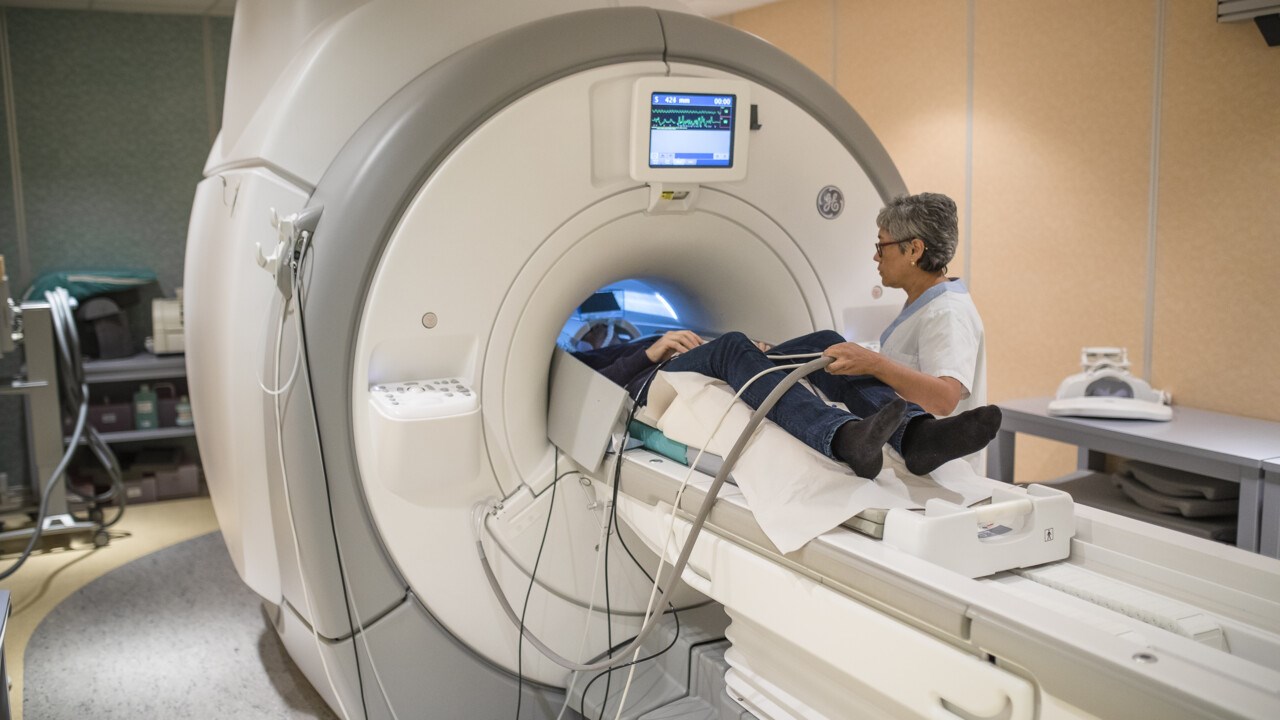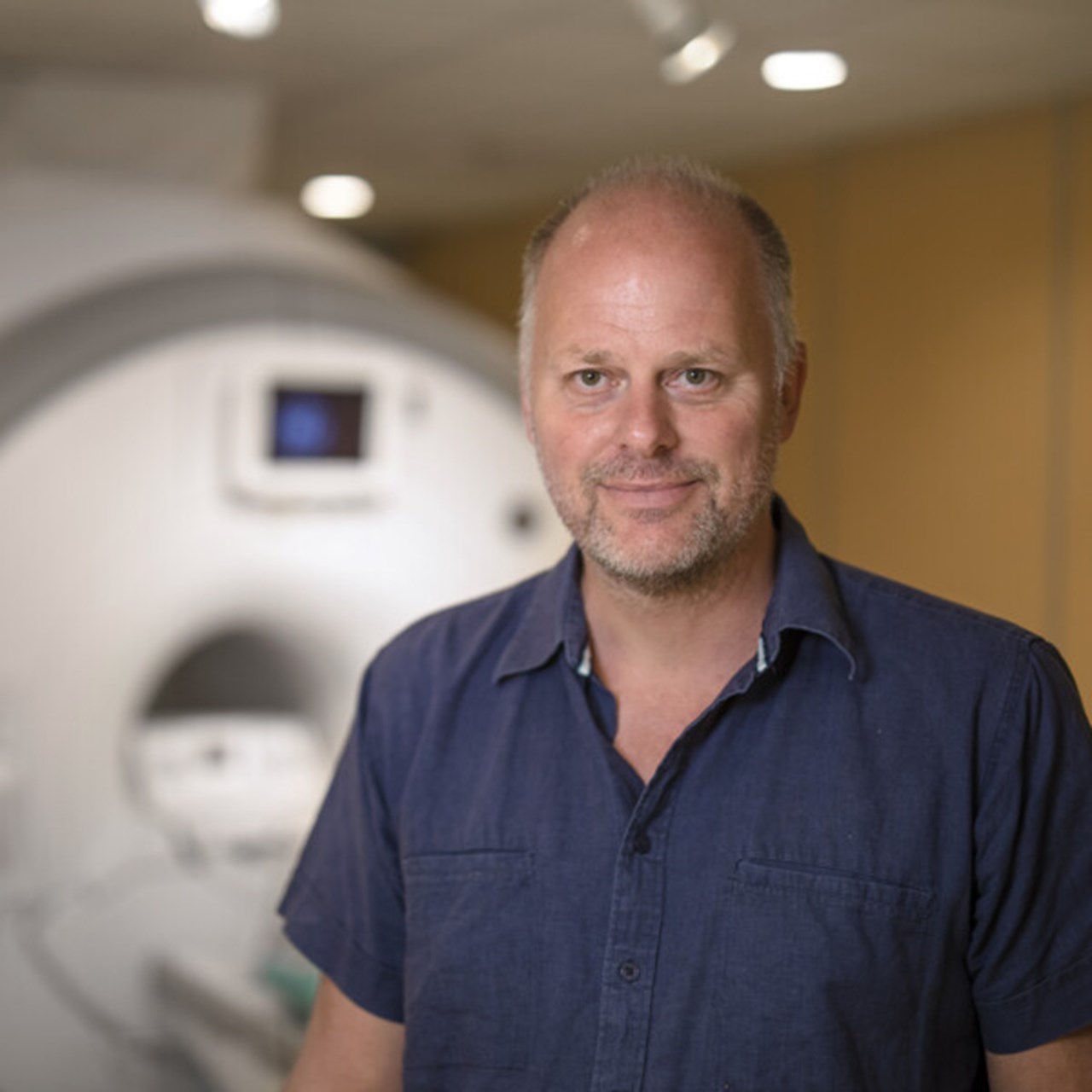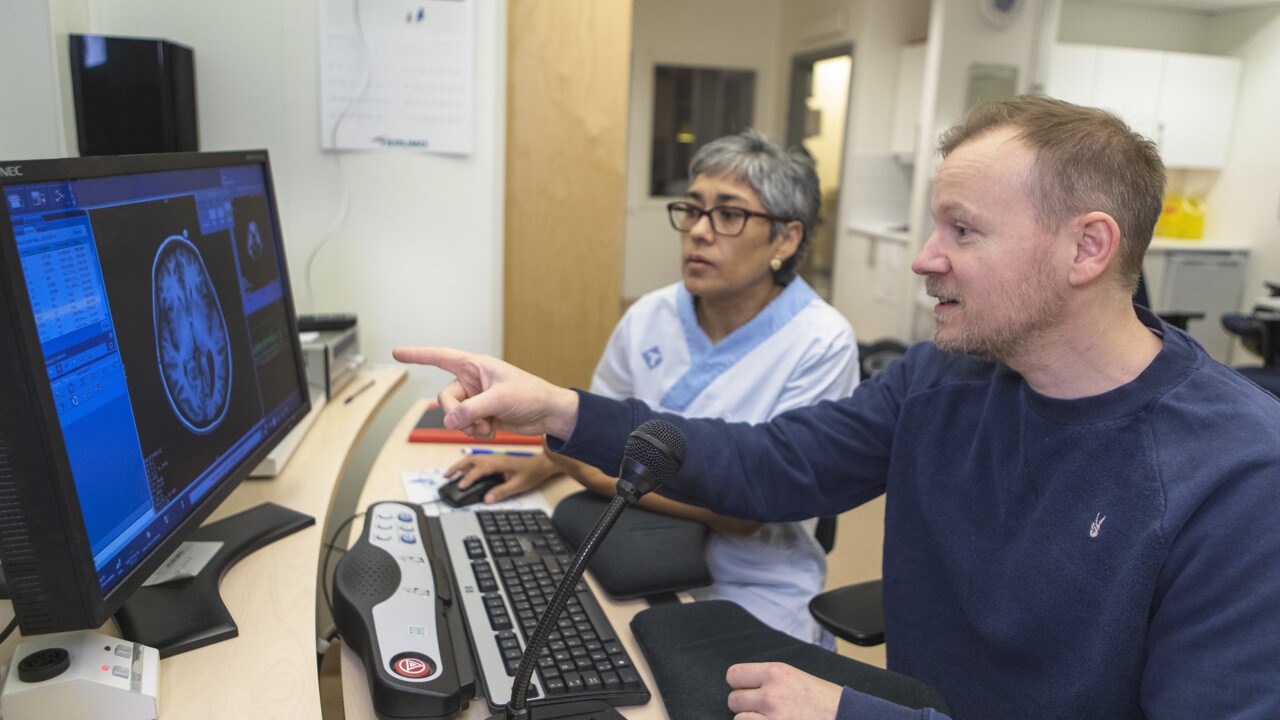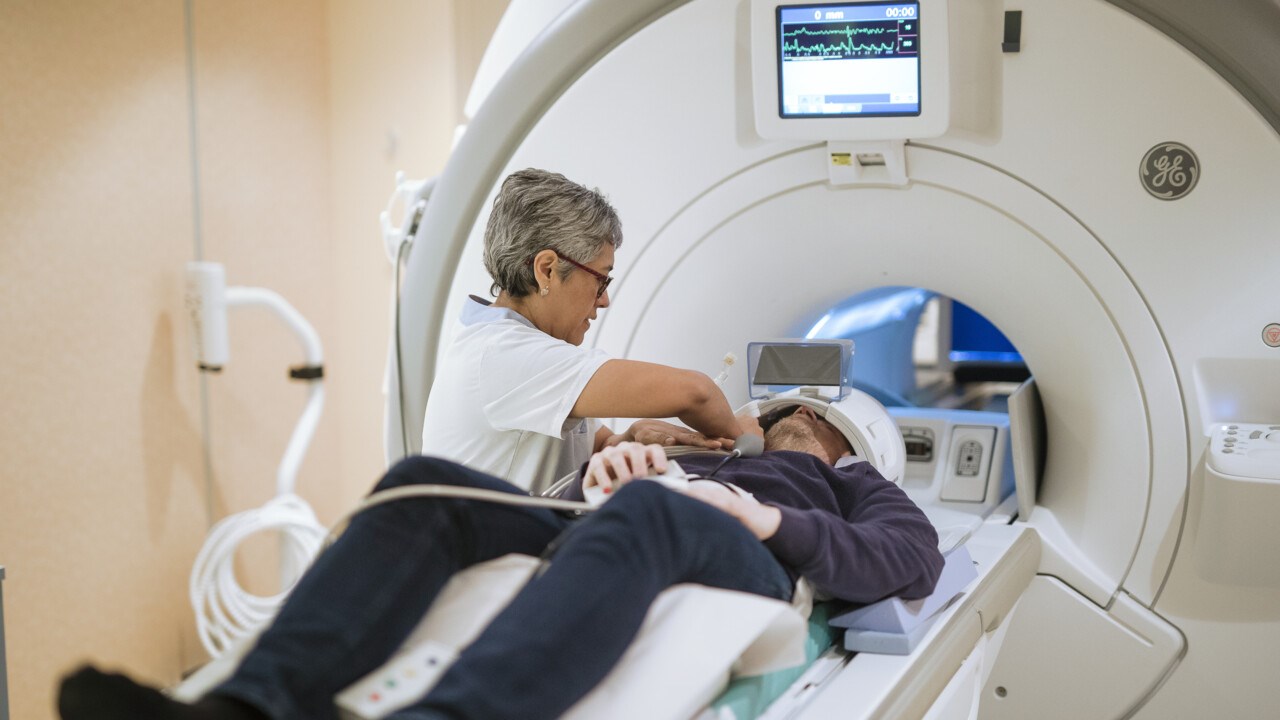
Image: Mattias Pettersson

Image: Mattias Pettersson
FEATURE How does memory and the brain work? Can we influence how our memory ages, and are there ways to improve memory? At UFBI - Umeå Centre for Functional Brain Imaging, memory and the brain are the focus of research; now and in the future.
UFBI is an interdisciplinary research centre founded in 2001. The centre focuses on brain research, including memory research to understand how memory works across the life span, especially during ageing. What many of the studies conducted at the centre have in common is memory research, something Umeå has been at the forefront of.
– Many of the fantastic results from here are about memory, and this has put Umeå on the map as a strong engine in understanding how memory works during the life span, explains Anders Wåhlin, Deputy Director of UFBI.
Some of the studies are so-called longitudinal studies, which run over many years and examine memory functions. They have looked at memory during development and education, but especially during ageing, how memory changes and why. Two of these projects are Cobra and Dynamic, which are unique studies on memory, the brain and dopamine. Cobra starts from the age of 60, while Dynamic looks at memory from an adult life-span perspective. Umeå has been an early adopter of longitudinal studies, with the Betula project being the most unique project that has formed the basis for further research in the field. Over a period of 30 years, the Betula project has studied ageing, memory and dementia through tests and interviews with people in the study.
To understand how people change over time, you have to follow them

Lars Nyberg is a professor of neuroscience. His research involves using functional brain imaging to link brain systems to different memory processes.
ImageMattias PetterssonLars Nyberg, Professor at Radiation Sciences and IMB founded UFBI and was also involved in the start of the Betula project. The project actually started with data collection even before fMRI technology was invented, where between 1988-1990, 1000 Umeå residents between 35-80 years old were tested. These were then followed up every five years and new groups were added.
– A total of 4500 Umeå residents have participated in the project, says Lars Nyberg.
The Betula project has more or less ended, and the last major collection was made in 2014.
– Those who had been involved the longest had been involved for 30 years, says Lars.
In other words, a huge database has been collected during these years, something that became possible when the Swedish Research Council awarded Lars and his supervisor the "Strong Research Environment in Sweden" award. An award that only ten groups in Sweden received, and which meant a significant financial contribution. It allowed them to combine Betula with the research at UFBI, which had just been launched.
– When we got that grant, we felt we had the capacity to test a lot of people. Nearly 400 Betula participants were scanned with an MRI, Lars explains.
These participants were then scanned twice more, five years apart.
– To understand how people change over time, you have to follow them, says Lars.
Getting people to volunteer for studies that extend over a longer period of time has not been a problem, which has also made it suitable to run the study and scanning in Umeå.
– Umeå has probably been a good place for it, there are quite few people who move away from here, and people are generally positive about coming back and doing new tests, Lars explains.
Anders Wåhlin agrees, and says that the people of Umeå are both keen and committed. Something that is important when working with studies over such a long period of time.
The project has been keen to take care of the participants. They have been invited for coffee, been given access to results, and Christmas cards have been sent to all participants!
– We have had popular science lectures where we have invited them and shown some results, had coffee and before each new round we have given feedback, says Lars.
After the completion of the Betula study, Cobra was started, where Lars Nyberg, together with Katrine Riklund and Lars Bäckman from KI (Karolinska Institutet), among others, took an interest in the dopamine system and what age-related changes in it do to the brain's functions. They have mainly focused on the Dopmania D2 system.
The Cobra project looks at what functional cognition in the brain looks like through an MRI camera. The project is a collaboration with KI, and research groups in Germany, but the actual scanning is done here in Umeå.
– We have good expertise here in Umeå, explains Anders Wåhlin.

UFBI is a multidisciplinary research centre where imaging techniques are used to study the brain.
ImageMattias PetterssonThe expertise and the fact that the participants are highly committed have made Umeå a good place to carry out the actual scanning. When they got the new PET scanner, they chose to place the Cobra and Dynamic data collection here.
– It is practically and financially difficult to examine as many participants as in Betula with PET, but about 180 were tested the first time, and about 130 of them came back after five years, says Lars Nyberg.
Before the PET/CT is replaced this summer, a third round awaits, where they hope to get around 100 participants.
Having longitudinal studies with PET is something quite unique.
– We had to think about this. The participants are 60+ when they start the study, a time of life when there is a lot going on in the brain.
In parallel with Cobra, Alireza Salami, a former PhD student of Lars Nyberg, started up the Dynamic study on the Dopamine D1 system. He did his postdoc in Stockholm and later received a Wallenberg Fellowship in Umeå (WCMM), which was the start of the Dynamic project. Cobra and Dynamic are thus two similar projects, with the difference being which dopamine system is in focus.
– These two projects enrich each other, explains Lars Nyberg.
– They are two large, unique and longitudinal studies that deal with understanding memory in ageing, and this is done by looking at dopamine with the help of PET. This makes these studies very unique, explains Anders Wåhlin.
In addition to these two studies, there are also studies looking at earlier parts of life, with a focus on learning. The aim of the memory studies is to gain a better understanding of what is happening in the brain in order to design strategies to counteract certain diseases. 'Just' doing crossword puzzles is not enough to keep the brain and memory strong and healthy. You need to design memory training exercises to access memory training.
– It can be very crucial to develop more sophisticated strategies to get an effect that you can use in everyday life, says Anders Wåhlin.
Mikael Stiernstedt, research coordinator at UFBI, says it can be difficult to reach out and communicate the results and findings. 'The noise makes it difficult to get through.
– Many people can say that something works so well, even though there may not be strong evidence for it. It can be difficult to find those who actually have evidence for what they say, explains Mikael Stiernstedt.
– One thing that the UFBI has contributed and is contributing is that through its longitudinal studies it has a unique opportunity to see that it is not deterministic that you deteriorate as you age. There are actually those who remain at a very high level over time and do not lose or deteriorate cognitively. This has been somewhat uncertain in the past, before there was evidence for it. The UFBI has been important in being able to describe how the brain works, that it is not certain but that it is possible to age in this way, even if there is a lot we cannot influence, adds Anders Wåhlin. The individual differences are significant!
Something that has been important has been to make the participants in the studies feel safe. Here they have chosen to employ MR nurses who take care of the participants when they arrive, so they feel calm and safe.
– If you are not worried, you don't lie down and move around in the camera, and then you get better pictures, explains Lars, who thinks that the model works very well.

Experienced research nurses take care of the participants when they arrive for the surveys.
ImageMattias PetterssonIn order to purchase the research magnetic camera, support was sought from the Wallenberg Foundation (KAW). The magnetic camera is shared with the region, a collaboration that works very well and has also created good opportunities for patients. On days and times when the camera is not used for research purposes, it is used in the clinic so that it does not stand still and is not utilised.
– We currently have about 20 hours a week for research studies, the rest is used for clinical work," says Lars.
Thanks to the camera, they have also been able to help reduce clinical waiting times. The interaction between the region and the university is both appreciated and valuable.
The collaboration is also positive for the participants in the study. Because even if you participate in the study, your images are reviewed, and you undergo a health examination, which may mean that something is discovered and thus can be referred onwards and the patient can come under care.
– It has actually happened, for example, that we have discovered high blood pressure in people during the health examination, which we have then been able to refer," says Mikael Stiernstedt.
– In some cases, discoveries in connection with MRI can be life-saving, says Lars Nyberg.
Detailed examination also provides good support for research, because if the reports state that a participant is neurologically healthy, you can guarantee this with great certainty.
The MRI camera is useful for studying brain function. The participant lies in the MRI camera and performs certain tasks while looking at the brain and how it is activated and which parts of it are in control. This is called functional MRI (fMRI). The participant performs memory tests while looking at brain function and what is happening inside the brain. All three studies (Betula, Cobra and Dynamic) have examined this particular aspect and how the brain's functionality has changed over time.
– It is exciting to be able to look into the brain and see how it works, explains Lars Nyberg.
He goes on to explain how this has also had an effect clinically, when clinical fMRI can be used on patients by, for example, having the patient perform a motor task prior to surgery on a certain area of the brain. Lars believes that the collaboration that is clearly present in these projects is important, especially since we are a university hospital and need to show how research and the clinic can best collaborate to move forward. That research can find its way into healthcare and contribute.
– Sometimes it takes time, but sometimes it is quick to translate knowledge into practical activities, says Lars.
The UFBI is a multi-disciplinary, multi-branch centre that is stimulating and creative, bringing together many skills, including statisticians, who have contributed to the advancement of research. Several international projects have been established, with a good level of activity. Lars and the others at the centre have achieved this through collaboration, openness, patience, and by growing organically at a reasonable pace.
– It is crucial that there is an open attitude, that you dare to think long-term, says Lars.
It took a few years before UFBI published, largely because of the long-term approach required when conducting longitudinal studies, where patience is crucial. At UFBI, they have succeeded in this, being able to have peace of mind and rest in the knowledge that the results will come if you give it some time.
– If you have ice in your stomach and patience, it can really pay off in the long run, Lars concludes.